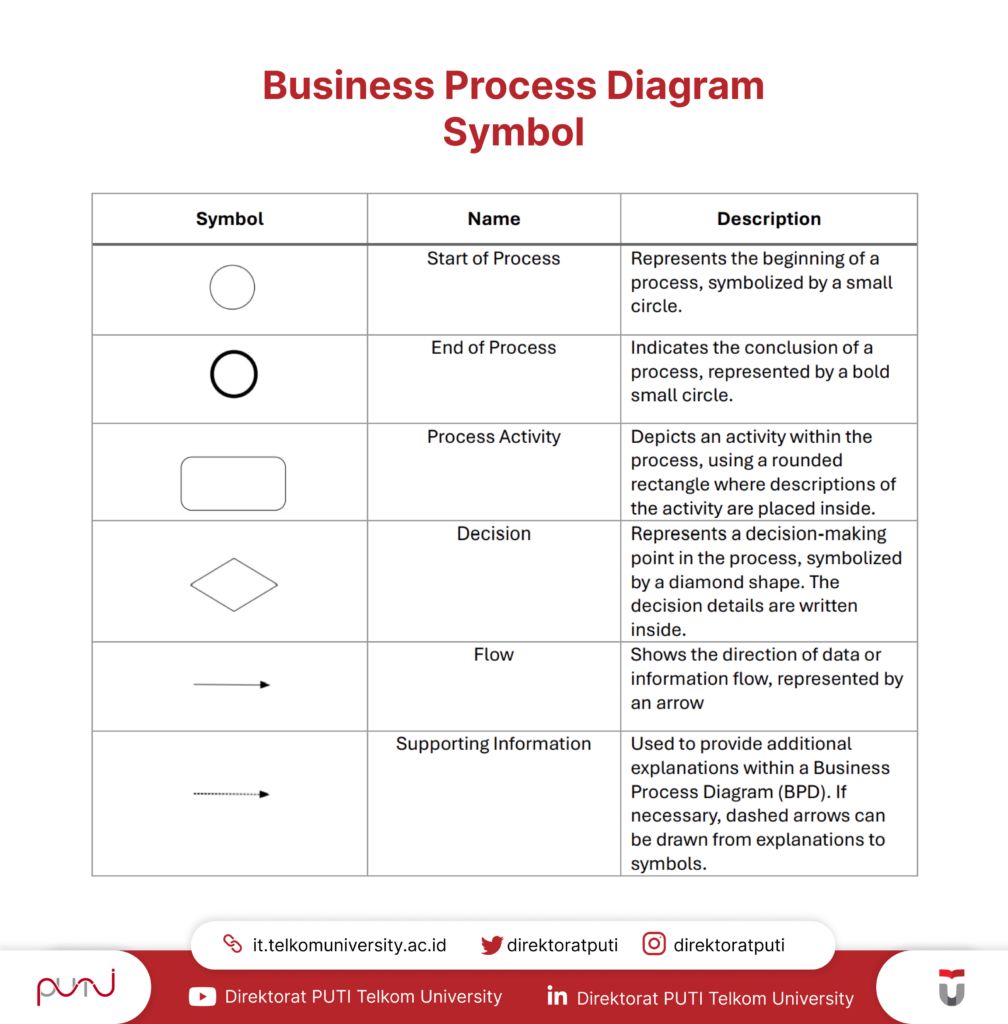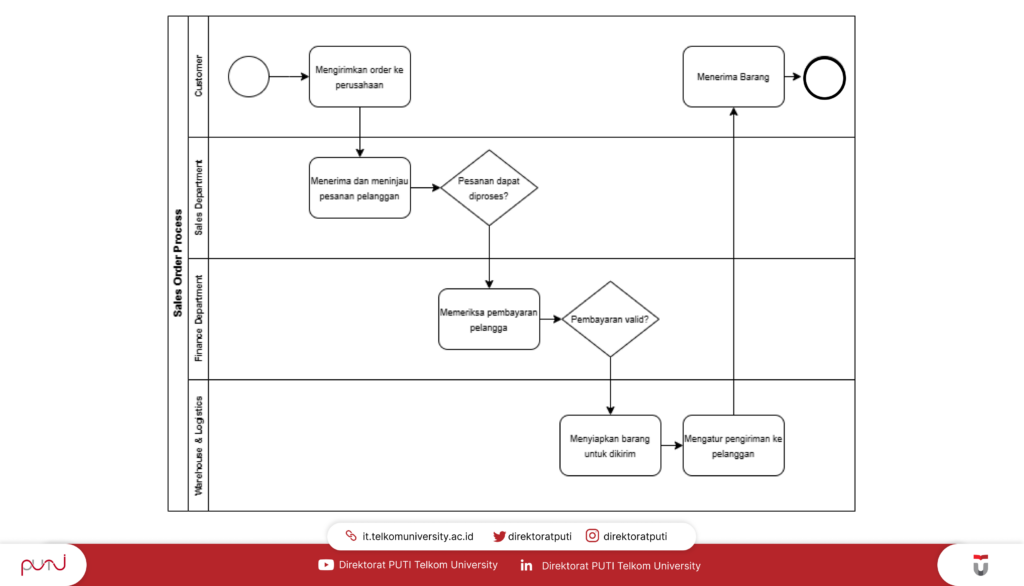A business process diagram, also known as a Business Process Diagram (BPD), is a visual representation that illustrates various steps or activities within a business process. BPD presents the step-by-step flow of the process in a simple manner, making it easier to understand in a short time.
In business, there is a strategic term called a Business Process Diagram (BPD). For business people, this concept may still be unfamiliar. However, a Business Process Diagram can be highly beneficial in running a business. What exactly is a Business Process Diagram? Let’s explore the explanation below.
What is a Business Process Diagram?
BPD is a visual way to explain the steps or activities carried out in running a business. A Business Process Diagram (BPD) can be likened to a graphical representation of a series of activities that form a business process, including activities, events, and gateways connected by a sequence flow. BPD serves as a communication tool to help developers and stakeholders understand, analyze, and improve existing business processes.
For business people, a Business Process Diagram provides a way to simplify the execution of all business-related activities, given the numerous activities involved. For example, in a Sales Order cycle, there are activities such as order placement, checking customer credit, verifying stock availability in the warehouse, and confirming order receipt from consumers. All of these activity data can be illustrated in a Business Process Diagram.
The goal is to provide readers with an easier understanding of the activities occurring within a business process. Thus, understanding how to create a Business Process Diagram is crucial.
Elements in a Business Process Diagram
The elements in a Business Process Diagram consist of various symbols, each with a different function to represent business processes. Below is an explanation:

Elements of a Business Process Diagram
- Start of Process
- Symbol: Small circle
- Function: Indicates the starting point of a business process, signaling that the process has begun.
- End of Process
- Symbol: Small thick circle
- Function: Indicates the endpoint of a process, signifying that all stages in the process have been completed.
- Process Activity
- Symbol: Rounded rectangle
- Function: Represents a specific activity or task within a business process. The information about the activity is written inside this symbol.
- Decision
- Symbol: Diamond shape
- Function: Indicates a decision point within the process. Information about the decision that needs to be made is written inside this symbol.
- Flow (Process Flow/Direction)
- Symbol: Straight arrow
- Function: Shows the flow direction of information or processes from one element to another.
- Supporting Information
- Symbol: Dashed arrow
- Function: Used to provide additional information in the Business Process Diagram (BPD). If needed, this dashed arrow can connect explanatory elements to other symbols in the diagram.
This diagram helps visualize the workflow of a business process, making it easier to analyze and improve processes when necessary.
Also Read : What is Blended Learning
Things to Consider Before Creating a Business Process Diagram
Several points should be considered before creating a Business Process Diagram. Here are the key points:
- Understanding and Identifying Business Processes
This includes developing observations of organizational business processes, data flows, business functions, identifying departments, and external business entities. At this stage, it is essential to recognize data flows, documents involved as input and output, as well as actors and data processing procedures. - Omitting Certain Components
A Business Process Diagram is a diagram that illustrates what is happening. However, it does not detail how the process occurs, where documents are stored, or the technology choices used.BPD only describes what happens in a process; although documents are identified, they are not explicitly shown as in a flowchart. - Deciding the Level of Detail to Include
Business Process Diagrams are drawn in detail to facilitate evaluation, ensuring tasks are appropriately separated.Like a Data Flow Diagram (DFD), we can determine the level of detail in a BPD. Processes can be depicted at a high level, while further details can be illustrated in a separate diagram for easier understanding. - Managing the Chart
Essentially, a Business Process Diagram consists of two columns and may have multiple lines to explain each column. - Incorporating Each Business Process
The next step is to insert each activity within the business process into the diagram according to the predefined rows. Indicate where the business process starts and ends, and place the processes in the correct sequence.Then, use the appropriate Business Process Diagram elements or symbols, including descriptions for each symbol. - Sketching a Rough Draft
The next point is to sketch a rough draft of the business process diagram and review it with individuals familiar with the system. The focus should be on capturing content and explaining process activities.Then, refine the draft to ensure the diagram is accurately drawn and easily understood. - Creating the Final BPD Copy
This includes adding the name, date, and creator’s name on the diagram.
These are the explanations and considerations when creating a Business Process Diagram (BPD).
Also Read : What is FTTH
Business Process Diagram Examples
Below is an example of a Business Process Diagram (BPD) that visually represents the flow and steps in a business process, making it easier to understand and analyze the ongoing process.

Conclusion
A Business Process Diagram (BPD) is a highly useful tool for visually depicting the steps and activities within a business process. By using symbols with different functions, BPD simplifies the understanding of workflow and interactions between elements in a business process. The importance of BPD lies in its ability to present complex information in a simple manner, facilitating communication between development teams and stakeholders.
Before creating a BPD, several factors must be considered, such as understanding the business process, determining the level of detail to include, and properly managing the diagram. By following the correct steps, BPD can become an effective tool for analyzing and improving business processes while providing a clear overview of activities within an organization.
References
https://www.sciencedirect.com/topics/computer-science/business-process-diagram
Author: Meilina Eka A








